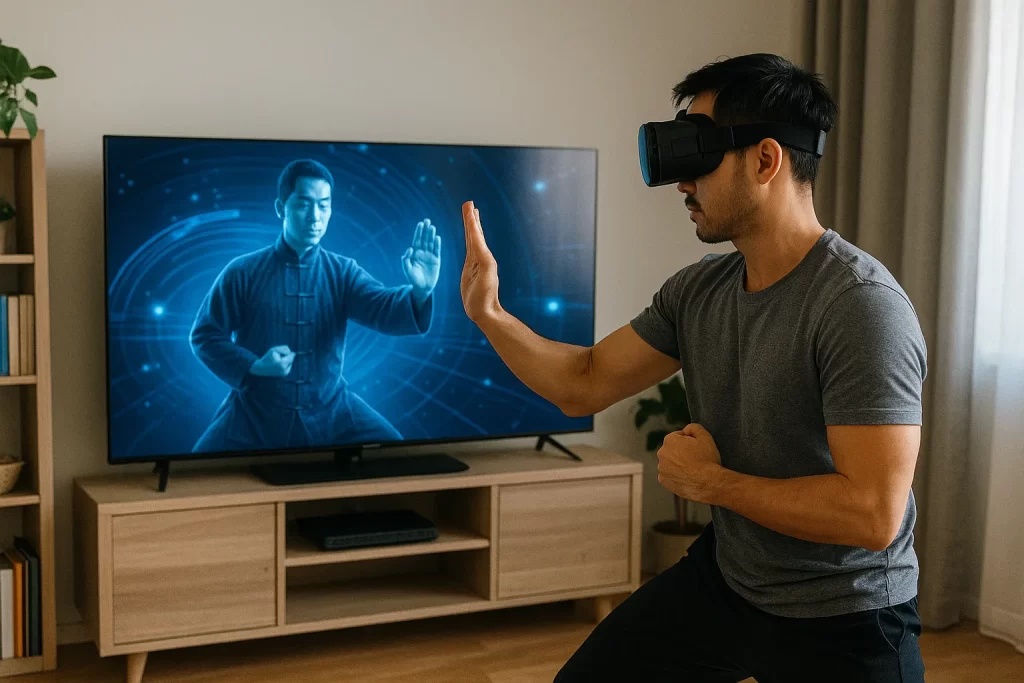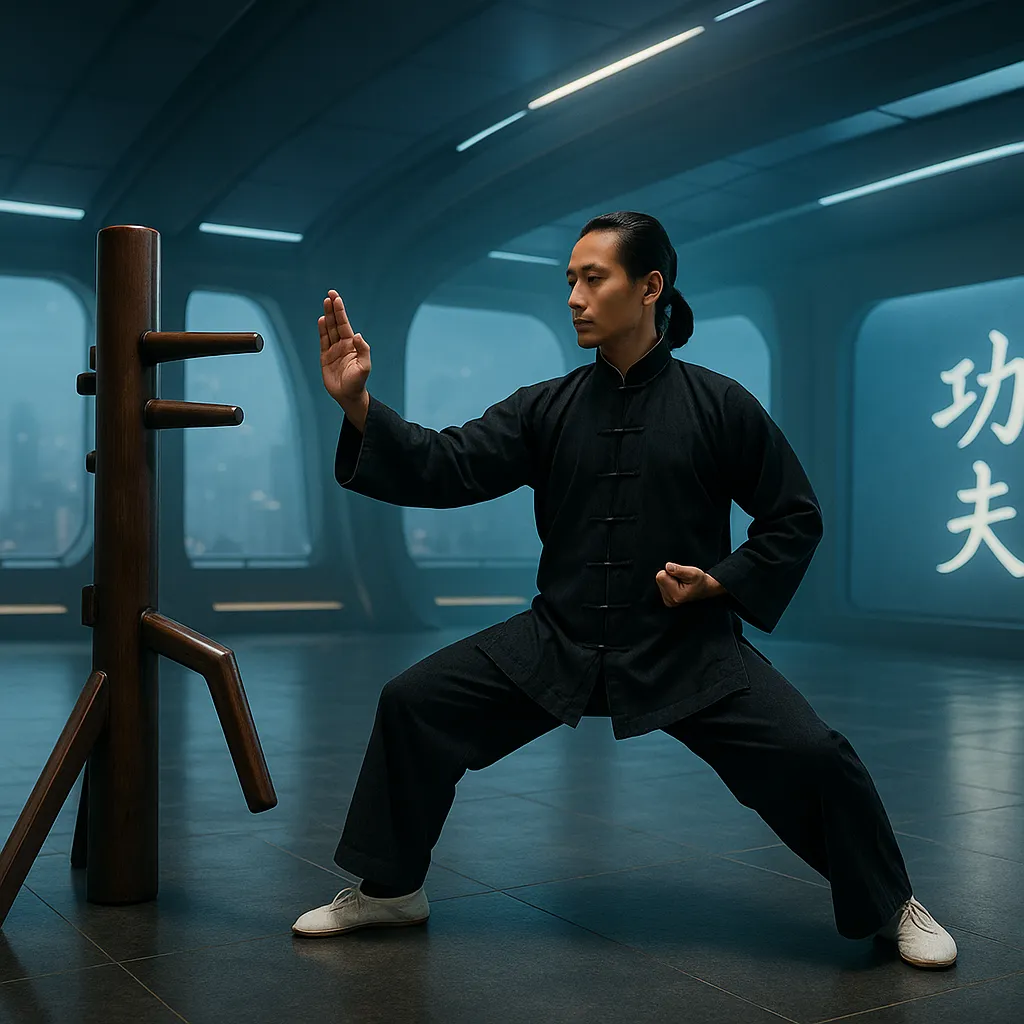A Martial Tradition at the Crossroads
Kung Fu in the 21st Century: A Global Practice Under Pressure
Once a cornerstone of both Chinese identity and the global fascination with martial arts, Kung Fu now faces a nuanced and complex role in today’s rapidly shifting landscape of combat sports, wellness trends, and digital distractions. Despite its cinematic legacy and philosophical depth, Kung Fu has witnessed a gradual decline in mainstream visibility compared to competitive formats like MMA, Brazilian Jiu-Jitsu, or even Taekwondo.
Globally, the number of registered Kung Fu practitioners (across various substyles) dropped by approximately 15% over the last decade, based on data from international federations and martial arts census studies (e.g., IWUF 2023). This decline is particularly noticeable among youth and competitive athletes, where metrics of success favor quantifiable outcomes—wins, belts, and rankings—rather than form, discipline, or internal growth.
However, a deeper look reveals a more promising picture. In the West, for instance, there’s been a 22% rise in adult-only Kung Fu classes since 2018, with many new participants aged 30–55 citing reasons such as stress reduction, physical rehabilitation, and cultural interest. Rather than die out, Kung Fu is in the midst of a transformation—from a path of competitive mastery to one of holistic personal development.
In China, government-backed programs to preserve traditional arts have helped sustain core institutions, but Kung Fu’s future increasingly depends on global adaptability and cultural reinterpretation. Notably, hybrid training centers in cities like Toronto, Paris, and Kuala Lumpur now combine classical Shaolin or Wing Chun with mobility work, breath training, and psychological resilience programs, tailored for urban professionals.
Cultural Legacy and the Relevance of Ancient Forms
Kung Fu is not just a martial system—it is a living archive of Chinese philosophy, medicine, art, and identity. Its fluid forms, philosophical underpinnings, and internal-external balance reflect thousands of years of cumulative wisdom. But this very depth can create friction with the modern learner’s priorities.
In today’s world of instant results and quantified training (calories burned, muscles gained, reflexes measured), the abstract and often non-linear progression of traditional Kung Fu can appear obsolete. Forms (taolu), which were once central, are now sometimes seen as ritualized choreography with limited fighting application. Without skilled teachers and contextual framing, the deeper meaning—intention (yi), breath (qi), and energy flow—risks being lost.
Nevertheless, a growing minority of practitioners actively seek out the ‘hidden curriculum’ of Kung Fu, including Daoist principles, meditative drills, and the notion of lifelong cultivation. These elements increasingly appeal to overburdened professionals facing burnout, digital fatigue, or anxiety-related disorders. Kung Fu becomes a counterbalance—not a competition format, but a form of embodied philosophy.
Adapting to the Needs of the Modern Body and Mind
Physical Realities: Kung Fu as Somatic Rebalancing
Modern humans spend most of their time sitting, scrolling, and mentally overstimulated—conditions at odds with the environmental and animal-based roots of Kung Fu movement. Many core practices—such as low stances, dynamic spirals, and coordinated breathing—demand mobility and proprioception that today’s average office worker lacks. But it’s precisely this contrast that gives Kung Fu a new relevance.
Unlike high-impact sports requiring peak conditioning, many Kung Fu lineages emphasize “rebuilding” the body through gentle, progressive work. Styles like Baguazhang, Tai Chi (Taijiquan), and Hung Gar include deep stance work, joint articulation, and slow repetition—essential for restoring balance to bodies shaped by sedentary lifestyles.
According to recent studies in movement therapy, individuals who incorporate traditional martial movements into their weekly routine report significant improvements in lower back health, ankle stability, and shoulder mobility. One survey in 2022 conducted across five European cities found that Kung Fu practitioners over 40 showed 30% greater mobility and 18% lower incidence of stress-related insomnia compared to age-matched fitness club users.
Mental Frameworks: Psychological Anchoring through Form and Focus
Modern life brings chronic cognitive overload. Kung Fu offers tools that go beyond physical defense—it provides ritual structure, intention, and deep work. Where gym routines push for constant variety, Kung Fu encourages mastery through repetition, patience, and humility.
For example, Wing Chun’s wooden dummy training (mook jong) isn’t only a combat drill—it’s a form of moving meditation, where attention is honed into precision, timing, and inner stillness. Likewise, Shaolin’s early-morning standing meditations (zhan zhuang) are not just warmups, but powerful anchors against anxiety and fragmentation.
Psychologically, Kung Fu builds what cognitive scientists call “top-down awareness”: the ability to act with deliberation rather than reaction. This has led some therapists to incorporate Kung Fu drills into trauma recovery or ADHD management protocols—not because of any fighting element, but due to the structured, rhythmic, and body-grounded nature of its practice.
Societal Role: From Warrior Lineage to Civic Resilience
Looking ahead, Kung Fu may find its rebirth not in televised tournaments but in its role as a life practice. Much like yoga evolved from spiritual asceticism to global wellness, Kung Fu’s value could lie in offering an integrated approach to strength, serenity, and social harmony.
Community-based Kung Fu schools, especially in diaspora communities, now function as intergenerational bridges, preserving language, tradition, and ethics through embodied experience. In times of cultural fragmentation, this can be profound. A Kung Fu class becomes not just a workout, but a microcosm of heritage transmission, respect for elders, and peer mentorship.
Moreover, as workplace burnout and loneliness are increasingly recognized as public health issues, Kung Fu’s group-centered training and moral codes (wude) offer a framework for shared meaning. Instead of isolation through fitness trackers, there is mutual correction, partner drills, bowing rituals, and seasonal festivals—human connection, rather than algorithmic optimization.

Evolving Techniques in a Changing Landscape
From Set Patterns to Adaptive Strategies
Historically, Kung Fu techniques have often been encoded in traditional forms (taolu), which are artistic, symbolic, and deeply cultural. But as global self-defense needs and physical engagements evolve, so too must the way Kung Fu practitioners approach technique. The next era will likely see a shift from fixed sequences to situational adaptability, preserving principles but updating delivery.
Already, progressive schools across Europe and Asia are exploring modular approaches to technique training, breaking down forms into movement categories such as evasion, redirection, disruption, and joint control. Rather than learning dozens of long forms, students might soon focus on mastering a compact system of reactive movement archetypes that can be layered in real-time.
Technological enhancements—such as motion capture suits, slow-motion playback, or AI-assisted posture correction—could also revolutionize how techniques are transmitted and refined. These tools would allow for precision in teaching biomechanics, enabling instructors to scale traditional skills without compromising quality.
Moreover, the internal components of Kung Fu—breathing, focus, energy control—are increasingly integrated into performance science and elite sports, hinting at a future where Kung Fu is not a relic, but a foundational toolkit across disciplines.
Self-Defense in an Era of Evolving Threats
The threats of today and tomorrow differ drastically from those faced during Kung Fu’s classical development. The likelihood of sword attacks or battlefield hand-to-hand combat is nearly nonexistent. Instead, urban violence, improvised weapons, and psychological aggression dominate the modern threat landscape.
This means Kung Fu’s future viability will depend on its ability to address contemporary forms of danger, including close-quarters entanglement, group threats, and even digital-physical overlap (e.g., situational awareness in smartphone-distracted environments).
Some lineages are responding. Sanda (Chinese kickboxing) and its grappling derivatives now include modules on defending against blunt weapons, knife control, and quick escape from holds. There is a quiet but growing effort to infuse traditional techniques with combat realism, similar to how Krav Maga or Systema evolved—without discarding cultural roots.
A key focus going forward will be the training of mental readiness: awareness, de-escalation, and scenario-based drills. Kung Fu’s philosophical depth uniquely positions it to offer a holistic self-defense system—one that includes physical skill, cognitive control, and ethical discernment.
Federations and Organizations: Barriers or Bridges?
The organizational ecosystem around Kung Fu has historically been fragmented. Numerous schools, often divided by lineage, interpretation, or politics, have created a patchwork of federations with inconsistent standards. This has made recognition, rank equivalency, and collaboration challenging on a global scale.
Yet, in an interconnected world, fragmentation becomes a disadvantage. The future demands a networked federation model—not monolithic control, but interoperability. Think of an ecosystem where Shaolin, Wing Chun, Choy Li Fut, and Baguazhang can coexist under shared frameworks of pedagogy, safety, and grading—while preserving style autonomy.
There are promising signs. The International Wushu Federation (IWUF) has expanded its reach, and independent efforts like Kung Fu Open Circuits and online instructor certification programs (with lineage transparency) are gaining traction. Such initiatives need to balance tradition and innovation—supporting both grassroots clubs and elite-level coaching.
Crucially, federations must also act as cultural custodians, documenting oral traditions, dialect-based forms, and teacher-student lineages before they vanish. The digital archiving of rare forms, interviews with old masters, and AI translations of ancient texts are not luxuries—they are essential for continuity.
Reimagining the Role of Kung Fu in Society
Kung Fu and Neuroplasticity: Mind-Body Integration for Modern Times
Beyond combat, Kung Fu is a potent tool for shaping brain function and mental wellness. Repetitive, intentional movement patterns activate motor cortex areas linked to concentration and emotional regulation. In an era plagued by ADHD diagnoses, burnout, and digital fragmentation, movement-based mindfulness practices like Kung Fu offer measurable cognitive benefits.
Emerging research from institutions such as Tsinghua University and the University of Edinburgh links traditional martial drills to improved executive function, especially in adults over 40. When paired with breathing techniques and visual focus drills, Kung Fu enhances neural plasticity, offering not just fitness but neurocognitive resilience.
This opens doors for new partnerships: Kung Fu programs in corporate wellness packages, neurorehabilitation centers, and even digital detox retreats. Rather than market itself only as a martial skillset, Kung Fu can evolve into a neuro-somatic art for the 21st century—a fusion of neuroscience, movement therapy, and Eastern wisdom.
Digital Expansion Without Dilution
The post-pandemic world accelerated digital learning. Online Kung Fu courses have multiplied, making ancient knowledge accessible from anywhere. But with access comes dilution. Short-form videos and “instant black belt” programs risk flattening the art’s depth into mere choreography.
To stay relevant without losing essence, Kung Fu’s digital future must be intentional, layered, and credible. Imagine tiered platforms: beginner access to foundational movement, mid-level modules on application and history, and advanced memberships including live mentorship, lineage certification, and community events.
Some pioneers already do this. Platforms like Shaolin Temple Cultural Center Online and Practical Wing Chun University offer rigorous curricula, emphasizing mentorship and feedback loops. Kung Fu must embrace digital evolution—not as a threat, but as a medium for global regeneration.
Conclusion: Does Kung Fu Have a Future—and in What Form?
Kung Fu does have a future, but not as a relic of nostalgic cinema or as a competitor in the combat-sport arena. Its strength lies in integration, not domination. As society seeks meaning, wellness, and embodiment, Kung Fu offers a unique synthesis of strength, serenity, and ethical grounding.
But risks remain. Without thoughtful adaptation, the style could fracture into cultural tokenism or dissolve into fitness entertainment. The slow loss of traditional masters, lack of standardization, and competition from trend-driven systems threaten its depth.
To ensure survival:
- Communities must document rare forms and support intergenerational teaching.
- Federations must embrace transparency and cooperation, not isolation.
- Teachers must translate depth into accessibility, without compromising on standards.
- Students must practice not just techniques, but also the ethics and philosophy that define Kung Fu.
Support for Kung Fu’s future isn’t about donations or fanfare—it’s about showing up, bowing in, and beginning again.
Curious about how Kung Fu can truly fit into your modern lifestyle? In the second part of this series, we explore how traditional forms adapt to everyday routines, the role of Kung Fu in mental health, and how digital tools are reshaping the way we train.
👉 Continue to Part 2: Kung Fu as a Modern Practice


